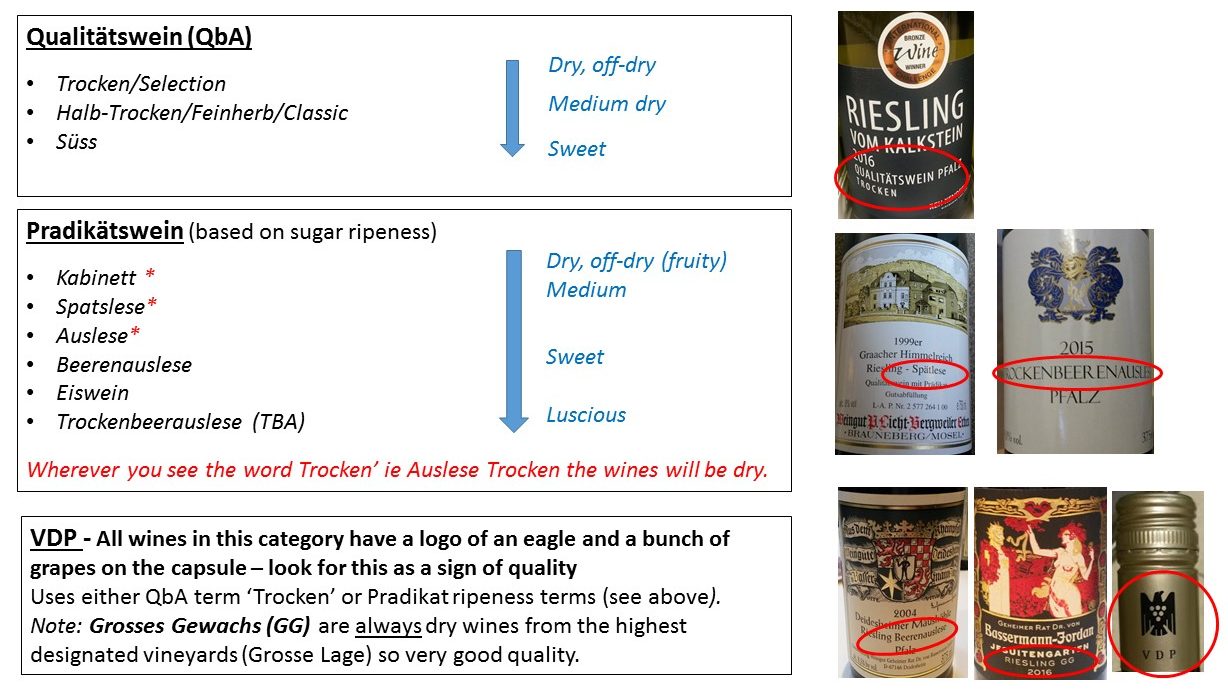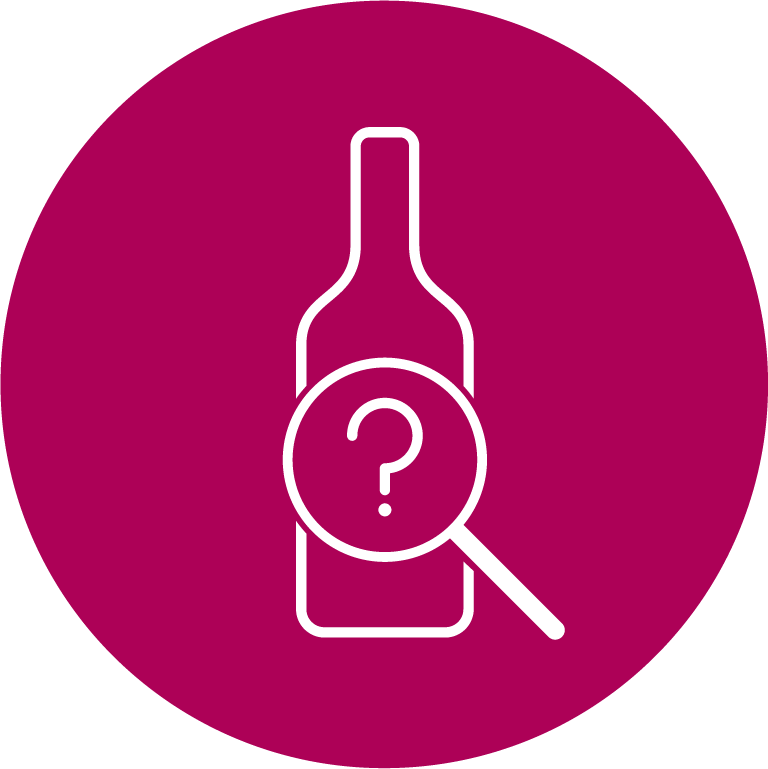I really do want to encourage more people to consume German wines and in particular German Riesling as they truly are well worth the effort but I understand how confusing and non-user friendly many labels can be. As I referenced in my last post on Riesling, the German classification system is a tricky beast and one that I don’t want to go into too much detail on as I suspect it will confuse more than assist.
So there is lots I have chosen to omit, deciding instead that simplicity is the call of the day.
Trying to work out how best to explain this in terms that are actually useful to wine buyers I have created a diagram which (I hope) clarifies the key points and will help you when you next pick up a bottle of German wine.

I’d suggest checking out the diagram and then reading on if you are still unsure as I think I’ve covered most of the key points there, but if not and you want to read on here are a couple of useful pointers to remember:
♦ Both Qualitätswein and Pradikätswein are considered Quality wines.
♦ Qualitätswein allows süssreserve to be added to give wine sweetness whereas Pradikätswein are based on the amount of natural sugar ripeness in the grape at picking.
♦ Qualitätswein will only use terms such as ‘Trocken’, ‘Classic’ etc. If you see terms such as ‘Kabinett’ this is a Pradikätswein and there are 6 possible classifications ranging from Kabinett to Trockenbeerenauslese (TBA). The classification will be noted on the label.
♦ Kabinett, Spätlese and Auslese can be dry. If you see the term ‘Trocken’ this tells you they are dry. If in doubt, look for the alcohol level to give you a clue. If the abv is around 12% these are likely to be at the drier end of the scale whereas a wine with 8% will have sweetness.
♦ VDP –This is a separate classification and given the higher production controls the wines tend to be of high quality. You can spot these wines by the presence of an eagle and grapes logo on the bottle/capsule. These wines can be naturally sweet or dry and follow same classifications as above in terms of ripeness ie Kabinett, or Qualitatswein Trocken etc.
If you see the term “Erste Lage” on the label – this denotes a very good vineyard site (think equivalent Premier Cru).
 If you see “Grosses Gewächs” (denoted by GG) this is the top dry wine, (think equivalent to a French Grand Cru). This can be in an embossed bottle with GG and a bunch of grapes or include a logo of the number one and a bunch of grapes looking something like this!
If you see “Grosses Gewächs” (denoted by GG) this is the top dry wine, (think equivalent to a French Grand Cru). This can be in an embossed bottle with GG and a bunch of grapes or include a logo of the number one and a bunch of grapes looking something like this!
I hope that’s made things clearer and you can look forward to buying that bottle of German Riesling with confidence that you now know the likely quality and sweetness level.
